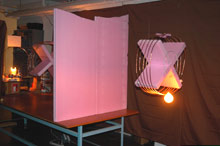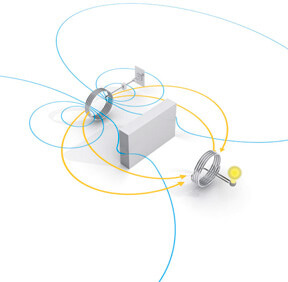The Commission is currently wading through more than 2,000 responses to its proposals for the next Framework R&D programme, due to run from 2014 – 2020. With a proposed budget of at least €140 billionthere is much to fight for…
By the time the consultation on the next Framework Research Programme closed on 20 May the Commission had received 750 written responses and more than 1,300 people had filled in an online questionnaire.
The huge number of responses speaks volumes about the importance that people across the EU attach to Framework as the largest single source of funding for R&D in Europe. It also highlights the number of diverging interests that the Commission must accommodate as it wades through the responses in order to give initial feedback at a meeting in Brussels.
But a quick perusal of published responses from national governments, research institutions, lobbying groups, companies and individual scientists reveals a marked unanimity – at least in terms of the headline demands – for more money, for simplification of administration, for a focus on excellence and for Framework Programme 8 (FP8) to help with funding large-scale scientific infrastructures.
If the demand for increased funding is only to be expected, it is perhaps surprising to see the UK government leading the call for FP8 to have more money than its predecessor. Its position paper, “Funding for EU Research and Innovation from 2014,” says EU research and innovation programmes should continue to receive a high – and ideally an increased proportion – of the future EU budget.
The UK position paper, and the other 749 contributions, have been made in response to the European Commission’s Green Paper, “A Common Strategic Framework for future EU Research and Innovation Funding,” published on 9th February 2011. Here, the Commission proposes major changes to EU research funding, which are intended to make participation easier, increase scientific and economic impact, and provide better value for money.
In calling for more money for FP8, the UK government is in the company of many other bodies, including the European Research Council, which wants a doubling its individual budget, to a level of around €4 billion per year.
Call for simplification
One of the fiercest criticisms of FP7 relates to the time and effort it takes to apply for grants – indeed a cottage industry of consultants has sprung up, specialising in filling in forms and advising people on grant applications. The R&D Commissioner Maire Geoghegan Quinn has already started to simplify procedures in FP7. But as is made clear in comments from bodies such as the European University Association, which points to an, “Urgent need for reform to achieve common terminology and clear and consistent rules and regulations within all EU grants/contracts and their implementation in order to reduce administrative costs at the university level,” there is much room for improvement.
Streamlining administration in FP8 will be important not only to improve on shortcomings in the current FP7, but also because the kinds of projects that are envisaged under FP8 will be inherently more complex, involving more partners in more countries, and across more disciplines and more sectors.
Examples include the proposed European Innovation Partnerships, the first of which -in healthy ageing – has set the ambitious objective of increasing the health span of European citizens by two years; the Knowledge and Information Communities being set up under the auspices of the European Institute of Innovation and Technology (EIT) to deal with large and multi-faceted problems including climate change and energy supplies; and the two €1 billion programmes that are to be set up under the Future and Emerging Technologies (FET) banner, both of which will involve dozens of partners.
Complexity is a problem for industry too
The added complexity that will come from managing the inputs of so many partners in these projects must be offset by simplification at the funding source, as Willem Jonker, CEO of the EIT’s ICT Labs project, and formerly of the Dutch electronics firm Philips, told Members of the European Parliament last week. Although industry has agreed to take part in KICs, there needs to be simplification, “or industry could just as soon go,” Jonker told a meeting of the Industry, Research and Energy (ITRE) Committee, where EIT representatives outlined the state of play and described proposed future activities to MEPs.
Beyond the need to simplify administration in FP8, there is also a call to streamline the vast array of different funding instruments that have sprung up under the auspices of successive Framework Programmes. Respondents agree that over time, EU research and innovation programmes have multiplied and expanded to the point where there are too many uncoordinated programmes, spreading funding too thinly. A lack of coordination between EU and national funding adds to the complexity and leads to overlap and duplication, argues the European Research Area Board (ERAB), which says, “The overall efficiency of the EU innovation system suffers from a large number of instruments which are overly complex and have different funding schemes, rules and timetables.”
Focus on excellence
Inevitably, there is a clamour for FP8 to put more focus on excellence. The cheer leader here is the European Research Council (ERC), a great exemplar of how holding to this value – rather than distributing research funding to member states pro rata – can drive the quality of research across Europe as a whole.
Not only has its grantee Konstantin Novoselov reached the pinnacle of scientific excellence in winning the 2010 Nobel Prize for Physics, the ERC says the quality of its peer review is boosting the quality of research funded by member states.
As the President of the ERC, Helga Nowotny explained to the ITRE Committee meeting, some national research funding bodies are reorganising their peer review processes to the same standard as the ERC – Poland is an example here – while others are deciding to fund researchers who get invited for interview at the ERC, but fail to make the cut. On average, the ERC has only been able to fund 13.8 per cent of the applications it has received, leaving many excellent researchers with projects that are ready to roll, but without grants.
Nowotny said the best scientific talent is to be found “all over and across Europe,” but young people “vote with their feet” and move to the best institutions. At present these are in the countries with the highest national R&D budgets, with 50 per cent of the ERC’s grants to date being awarded to researchers based in 40 institutions. But “sticking with the principle of excellence” can drive up quality overall, Nowotny said. The ERC has cast light on the state of national research systems. Member states can see how they compare and what they need to do to improve.
As Jack Metthey, Framework Programme Director, who is responsible for Inter-institutional relations in DG Research told ITRE, “Clearly, the ERC is a success and the key ingredient is excellence – this is a lesson we must meditate and conserve.”
Support for research infrastructure
There are also calls for FP8 to provide greater support for expensive scientific infrastructure with shared access across the EU. This is a key recommendation of ERAB, which sees such large-scale facilities as the building blocks of a single European Research Area. In its position paper ERAB says, “Research Infrastructures require more financial EC support for open accessibility and new construction beyond the preparatory work.”
One reason there are so many responses to the Green Paper is that under FP8 the remit of European Union R&D funding will be formally extended to embrace innovation. Although companies have been involved in FP7 and previous Framework Programmes, the shift from R&D, to Research, Development and Innovation (RD&I) will mean a step change in terms of private sector involvement in FP8.
Avid interest
The EU now needs to synthesise all the contributions it has received to come up with a blueprint to renew, rationalise and redirect its science and research funding. Bringing innovation under this umbrella will inevitably leave a few academic noses out of joint, and there is lot for the Commission to digest over the next week as it works to come up with a concrete set of proposals to be announced next Friday (10 June). At the same time a new name for the Framework Programmes will be announced.
Underlining the high level of interest in the 2014 – 2020 research programme, for anyone who would like to attend the conference but hasn’t registered, it is now too late. As the Commission puts it on the website, “Sorry! Registration is no longer possible, as there was considerable oversubscription due to the public’s avid interest.”


